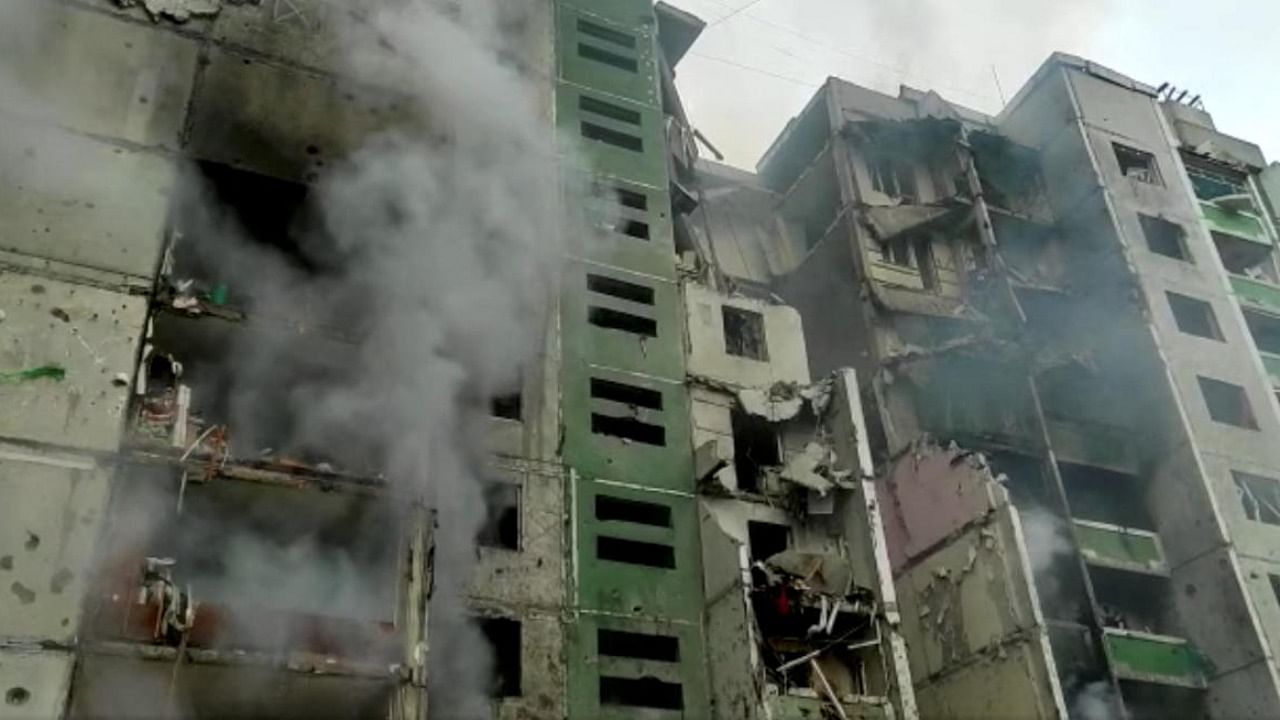
NATO has accused Russia of using cluster bombs in its ongoing invasion of Ukraine, just days after Ukraine accused its neighbour of deploying thermobaric weapons on the country.
There have been reports of that Russian troops deployed cluster bombs on civilian properties, with a preschool and a hospital both reportedly hit, even as the International Criminal Court prosecutor launched an investigation that could target senior officials believed responsible for war crimes, crimes against humanity or genocide amid a rising civilian death toll and widespread destruction of property during the invasion.
Russia's deployment of cluster bombs - banned under international law - has sparked concerns and outrage in the international community, which is already seeing widespread anti-Russia protests.
A cluster bomb is is a weapon that contains multiple explosive submunitions.
According to the Cluster Munition Coalition, cluster bombs are dropped from aircraft or fired from the ground or sea, opening up in mid-air to release tens or hundreds of submunitions, which can saturate an area up to the size of "several football fields" and are designed to kill and destroy, or to deploy landmines or chemical weapons.
Developed during World War II and originally stockpiled for the Cold War, cluster bombs can have up to 600 submunitions per bomb and can be deployed by aircraft, artillery or missiles, according to the International Red Cross.
According to the Red Cross, the submunitions explode above or on the ground, but large numbers of the submunitions can often fail to trigger, leading to an array of 'very dangerous duds' left in the aftermath of a cluster bomb explosion - historical data indicates that up 40 per cent of submunitions can remain unexploded, and can be triggered if they are disturbed.
34 countries are known to have produced over 210 different types of cluster munition. These include projectiles, bombs, rockets, missiles and dispensers, and at least 87 countries currently stockpile cluster munitions or have done so in the past. Current stocks amount to millions of cluster munitions, containing billions of individual submunitions.
The Human Rights Watch has said it has verified photographs of a Russian-made cluster bomb which was deployed on a hospital, and shared a video showing what appears to be a conical warhead that deployed the submunitions, and said that they are banned under a 2008 international treaty - of which neither Russia and Ukraine are signatories.
Josep Borrell Fontelles, the EU foreign policy chief, said Russia had bombed and shelled houses, schools and hospitals.
“This is a barbarian way of doing war,” Borrell said.
Stoltenberg said that in addition to cluster bombs, Russia has used other banned weapons in Ukraine.
“We have seen the use of cluster bombs and we have seen reports of the use of other types of weapons which would be in violation of international law,” he said.
NATO forces used cluster bombs during the Kosovo war in 1999, and the United States dropped more than 1,000 cluster bombs in Afghanistan from October 2001 to March 2002, according to a Human Rights Watch report.
With agency inputs
Check out DH's latest videos: